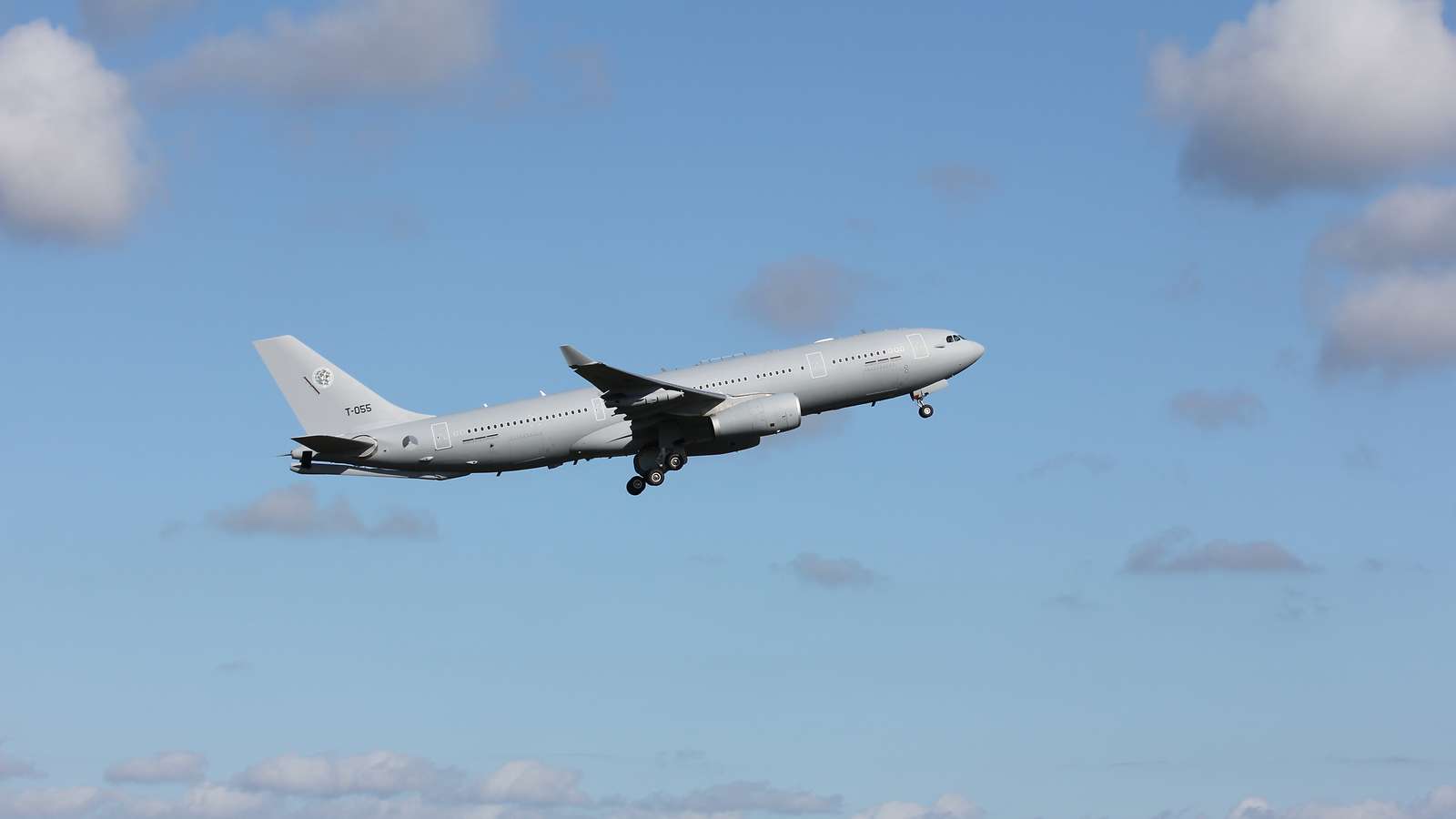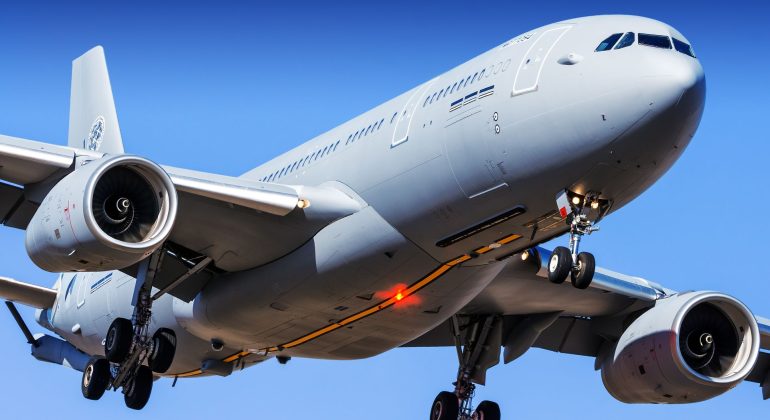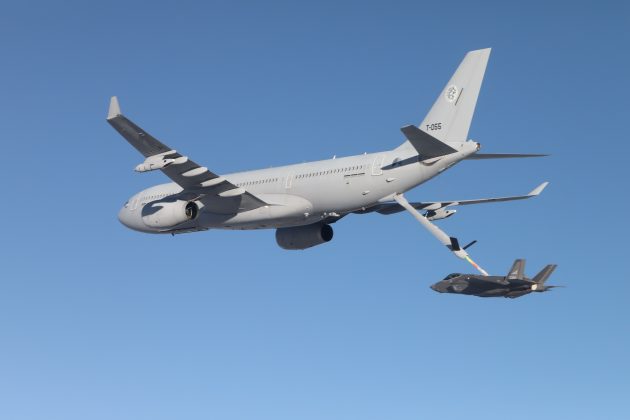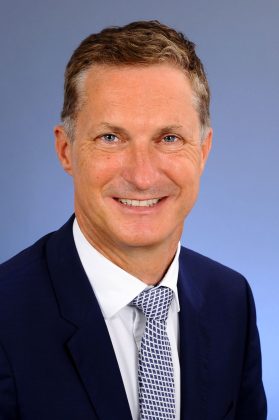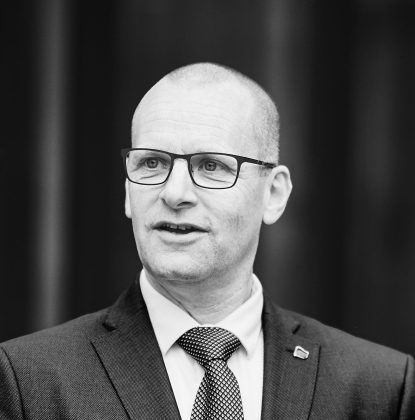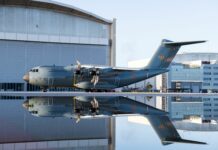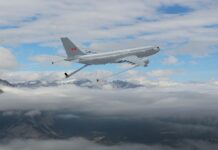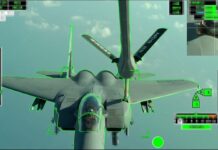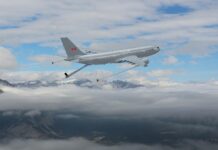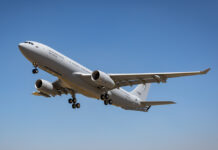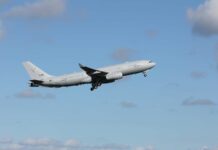Europe’s Multinational MRTT Fleet (MMF) programme is the most successful example of international cooperation in armament procurement. What are the main success factors that may have applicability in future similar initiatives?
European nations today face an uncertain and unpredictable strategic situation. New scenarios require new capabilities in increasing numbers, whilst the cost of individual weapons systems is increasing exponentially, stretching to the maximum the funds allocated for defence investments.
The multinational organisations devoted to European defence and security reacted in support of their Member States launching concepts and initiatives such as “Pooling & Sharing” by the European Union (EU) in 2010, or NATO’s “Smart Defence” solutions in 2011 with the intent to optimise available resources.
At the same time, new efforts have focused on the identification of the most critical capability shortfalls and on new and creative ways to procure them. Following operations in Libya, Afghanistan or Syria, and after extensive analyses by the European Defence Agency (EDA), NATO, at the 2012 Summit, welcomed that the EDA was taking the lead in an initiative to address the shortfall in Air-to-Air Refuelling (AAR) capacity in Europe.
The MMF Programme
This later crystallised in a specific Letter of Intent (LoI) signed by 10 European nations, which became the genesis of today’s Multinational MRTT Fleet. In December 2013, the European Council identified once again in its conclusions the AAR capacity, together with strategic transport, as one of the critical shortcomings in military capabilities in EU Member States. These conclusions endorsed the same capability gaps identified in 2012 by the EDA and NATO.
The MMF represents the best example of a successful answer to those urgent calls to join efforts addressed to cover military capability gaps. This multinational fleet arrangement is a cost-effective and flexible solution that mitigates the European shortage in AAR and strategic transport capabilities.
Increased Collaboration
The project demonstrates that close cooperation between NATO and the European Union can deliver critical capabilities, on time, on budget and exceeding customer expectations. This was possible thanks to the excellent cooperation between the NATO Support and Procurement Agency (NSPA), EDA and the Organisation for Joint Armament Cooperation (OCCAR) since the very beginning of the project.
Since the EDA started the initiative, the project has grown into a mature programme managed by the NSPA, on behalf of the nations involved, and supported by the OCCAR on the acquisition phase and the first two years of Initial In-Service-Support.
Being close to the delivery of the seventh MMF aircraft, it is of special interest to analyse the main success factors of the MMF Programme that may have applicability in future initiatives of a similar nature, some of them today following feasibility studies or in an early conceptual phase. During different sessions, the EDA, OCCAR and NSPA were able to identify a number of these success factors, both in the tactical and strategic level for future applicability.
Find a Lead Nation and Dare to Launch the Programme
The Netherlands decided to step forward in 2016 and assumed the role of lead nation of the Strategic MRTT Initiative. With Luxembourg, both nations combined their requirements for AAR and Strategic Transport in a Pooling & Sharing initiative to jointly procure a fleet of MRTT aircraft. The Netherlands identified the political appetite and decided to move forward and launch the initiative, despite all the uncertainties linked with the management of a new cooperative multi-agency programme. The challenges were many but they were progressively managed over the following two years.
After starting small in 2016, Germany and Norway joined in 2017, followed by Belgium in 2018 and the Czech Republic in 2019. The six European Allies signed the Memorandum of Understanding (MRTT-C MoU) and became members of the MMF Support Partnership with equal membership rights, regardless of their level of participation and funding contribution. The MMF nations will share the use of a fleet of Airbus A330 MRTTs, as well as their sustainment and operation. The MMF comprises nine aircraft with scheduled deliveries between 2020 and 2024, although the fleet is expected to grow in the coming years both in members and in the number of aircraft.
Probably the first and most important lesson learned from the early stages is to acknowledge the fact that a multinational pooling and sharing initiative comes full of uncertainties that cannot be identified and planned in detail from the very beginning.
Difficulties will progressively arise as the programme develops; more nations might join or more agencies might be involved; and all the challenges must be tackled as they appear. Despite all those concerns, it is necessary to dare to launch the programme, with a clear vision of the desired outcome and a committed group of stakeholders to make it a success. On too many occasions, very interesting initiatives do not move beyond the conceptual phase due to lack of commitment, difficult negotiations or the logical doubts of the early stages.
In this complex scenario, a second lesson learned from the MMF is that a strong lead nation is essential to the success of a multinational cooperative programme. The Netherlands has played a crucial role as the driving force for the MMF programme. As lead nation, they provided key personnel to steer several working groups, chaired the programme’s management bodies (Steering Group and Support Partnership Committee) and the MMF Executive Board, provided essential host nation support and have played the role of registering nation to the MMF. They were also instrumental in the growth of the programme, negotiating the MoU conditions for new partners, in close cooperation with EDA.
Finance
One of the creative solutions that made the MMF a success is linked to a fair and transparent cost share arrangement embedded in the MoU, making this another important lesson learned.
The MRTT-C MoU established a clear and equitable funding agreement by calculating the financial contribution per nation based on an annual Flight Hour (FH) factor that defines the national participation in the programme. This enables nations with a limited need of FH to join the MMF and still getting assured access to an entire fleet of aircraft that otherwise they might not be able to afford. Also, bigger nations benefit from economies of scale of this multinational cost share arrangement, beyond the obvious operational benefit of owning a larger fleet than they could otherwise afford. This provides an incredible surge capability to cover urgent AAR and strategic transport needs.
Another lesson learned linked to the framework of the MMF initiative is that the legal construct of the MRTTC MoU allows for broader participation across institutional limits. The MRTTC MoU is open to any interested party; it is not limited to NATO or EU Member States and is thus purely multinational. Furthermore, the governance through a multinational Executive Board and that the fleet is manned by a multinational unit highlights the purely multinational character of the programme.
Establish an Effective Multi-Agency Cooperation
The following lessons learned emanate from the unique management structure of the programme, which involves three international organisations: The European Defence Agency (EDA), the NATO Support and Procurement Agency (NSPA) and the Organisation for Joint Armament Co-operation, (OCCAR as per its name in French).
The embryo of the initiative flourished in the framework of the EDA, as a result of its mission to support the development of military capabilities and cooperation among its Member States. The use of EDA was instrumental in triggering political involvement, ensuring high level top-down support from the very beginning. The shortfall in AAR was addressed first and foremost by EDA at the ministerial level in 2014, through a Joint Declaration and the Letter of Intent on a European Strategic MRTT initiative. The political acknowledgement of the shortfall was crucial for the successful launch of the project. As the project developed under the umbrella of an EDA project team, it ensured immediate awareness amongst the 27 EDA nations. The continuous support from EDA to interested Member States to harmonise the operational requirements and agree on the baseline financial (including cost sharing) and legal conditions, has resulted in several additional partners signing the MMF MoU.
MMF nations entrusted NSPA with the ownership responsibility, together with its future operation and in-service support. NATO ownership of the MMF aircraft (through NSPA) leads to a greater delegation from nations to the agencies (NSPA and OCCAR), preventing diverging national agendas or micromanagement, common in other cooperative programmes.
Sharing Responsibility
Mainly due to the tight timeline imposed to launch the MMF initiative, NSPA delegated in OCCAR the responsibility for managing (on behalf of NSPA) the complex contract processes associated with the acquisition of the fleet, its acceptance and the initial logistics support. The close relationship between both organisations is governed through a specific Cooperation Agreement for the MMF Programme. This arrangement allows the use of OCCAR and NSPA within their strengths: OCCAR for its specific skills in managing complex cooperative acquisition contracts, where NSPA used its own experience in managing in-service fleet support. In this way, the strengths and wide expertise of both agencies are combined in the same initiative, maximising synergies and allowing for a mutual learning experience.
However, this innovative multi-agency management arrangement required some adaptation on both sides. OCCAR and NSPA established the Cooperation Agreement under time pressure and succeeded only in partially being able to provide a clear and detailed description of roles and responsibilities, leaving room for interpretation in certain areas. The ambiguities created some duplicities and mutual interferences that led to unnecessary tensions. These circumstances triggered the need for further planning and a revision of the management structure that was recently finalised. A key lesson identified here was that multi-agency cooperation requires an upfront clear and detailed description of roles and responsibilities, including duration of the joint venture. It is imperative to the success of a programme with more than one agency involved, that these rules are clear from the beginning of the cooperation and fine-tuned over the first few months of operations.
An adverse consequence of cooperative acquisition through the specialised agencies such as OCCAR or NSPA is that nations with limited experience in multinational cooperative programmes might perceive the agencies’ procedures intricate and inflexible. One of the early challenges that the Netherlands and Luxembourg had to face was precisely the fact that procedures for non-NATO/non-OCCAR interested nations should have been clear upfront. More clarity would have saved cost and time.
Interconnected with the above, another aspect to consider in future initiatives is the fact that programme management structures should be clear, unique and established at the beginning of the partnership. When OCCAR and NSPA included MMF in their portfolios, both agencies tried to apply their standing structures and processes over those of the other organisation, not recognising MMF’s distinct nature and the need for flexibility to ensure fruitful cooperation. One consequence of this misinterpretation was the lack of unity of command and duplication of effort for a period of time. As an example, very soon, OCCAR established a full Programme Division in Bonn (Germany) led by an A-5, later followed by a System Manager at NSPA (also A-5) in Capellen (Luxembourg) and a reinforced management team there. The management structure was finally rationalised in 2018 by establishing a virtual System Management Office (SMO), tying all elements needed for the success of the programme under the single direction of the NSPA System Manager. The SMO solution worked, in large part due to the people involved in the MMF programme, all committed and true believers in the success of the MMF.
In retrospect, it would have been more effective if both agencies had clearly identified a lead agency, created one programme office, appointed one programme manager, and created a single integrated programme team from the beginning, even using personnel from both organisations if necessary. When it comes to locating the management teams, proximity to the prime industry partner (OEM) during production phase, and to the Main Operating Base of the fleet during in-service phase provides for improved efficiency.
Choose the Right System and Industry Partner
The platform selected to satisfy the AAR and strategic airlift capability was the Airbus Defence & Space (Airbus DS) A330-200 MRTT aircraft. This is an Off-The-Shelf solution with a mature design, already in service with several users around the globe. Final assembly of the A330-200 basic airliner platform is performed by Airbus in Toulouse. The civilian aircraft then converts into an MRTT in the Airbus DS’ factory in Getafe, Madrid. This military conversion adds the ability to perform AAR, strategic transport of personnel and cargo, as well as medical evacuation (MEDEVAC) operations and limited VIP transport. All roles can be performed simultaneously if necessary.
The first lesson learned and linked with the weapons system itself, is the clear benefit of using a single lead industry (prime), which allows for effective programme management. For the MMF programme, Airbus DS acts as the industrial prime, taking responsibility for the production and a large majority entry into service of the aircraft. This way, most risks and responsibilities are assumed by a single organisation, making for a simpler supervision from the SMO. Exceptions are the DIRCM system, the MEDEVAC equipment and some of the military components (radios, crypto etc.) that are provided by the MMF nations (through NSPA) to Airbus DS as GFX.
Another distinct aspect of the MMF initiative is that no industrial compensation (just return) was expected by the MMF nations. This might seem an unprecedented example of generosity but it is a mandatory characteristic of any programme managed by OCCAR. Most large cooperative acquisition contracts embrace the opposite direction, later proving to be the source of big inefficiencies, complex (unnatural) industrial consortia that increase the final unit price and promote the dilution of responsibilities. MMF lacks these negative effects or else they are handled by the prime, compelled to aim for the most efficient and lean production chain.
Another lesson learned linked with the system itself is the commonality in configuration throughout the entire fleet. The MMF requirements were harmonised upfront, during the initiation of the project, with EDA facilitating the harmonisation of the operational requirements of the interested partner nations. This allowed for a smooth take-over by NSPA and OCCAR to further develop the programme and engage with industry with stable contractual requirements.
One of the strong principles of the MMF proved to be that any nation joining the programme has to accept the single configuration, based on the harmonised requirements. In the rare cases that changes to the configuration were deemed appropriate, they were accepted for the whole fleet (examples are the DIRCM and MEDEVAC improved configurations). This takes a disciplined support partnership but sticking to one single configuration enables the programme to be on time, within budget and within scope.
The last highlight linked with the system and the industrial partner, is that the inclusion of the Initial In-Service Support (I-ISS) in the acquisition contract assures smooth entry into service. On behalf of NSPA, OCCAR manages not only the acquisition of the fleet, but also the ISS set-up and the first two years of initial in-service support, all to be provided by a single contractor, Airbus DS. This allows for a sole interface from the customer towards industry, combined with an individual contractor taking on the burden of delivering the aircraft, as well as ensuring a smooth and easy entry into service. Subsequently, NSPA enjoys more time to refine the know-how about the weapons system and to contract for the best follow-on ISS solution.
Don’t Reinvent the Wheel
The current restrictive economic conditions will most likely remain in the near future, causing pressure on defence budgets allocated to procure new equipment. Allied nations will surely be compelled to look for alternative options and smart acquisition solutions such as MMF, to provide for the military capabilities required today.
For most nations, the modern complex and expensive weapons systems cannot be developed and procured nationally in the right numbers; they will slowly become unaffordable unless the acquisition strategy evolves from individually procured material to cooperative or joint procurement solutions, sharing acquisition or sustainment costs. The cooperative approach will most likely become the norm in the immediate future, rather than the exception. There is no better way for most European and Allied nations to satisfy operational needs applying best value for money practices.
The success of the MMF initiative is a unique example of effective procurement of military capabilities through a multinational cooperation, in a pooling & sharing arrangement. Conscious of the uniqueness of the MMF, all the MMF stakeholders jointly developed this article to present the reasons behind the success of the initiative; a cooperative programme that will surely be a reference for future initiatives.
Industrial partners, nations and agencies are now encouraged to not reinvent the wheel and make the most out of the lessons learned by the MMF, when shaping the new multinational, cooperative, multi-agency, pooling & sharing initiatives that will surely be the preferred approach in the coming years.
Angel Saiz Padilla, Dion Polman, Joachim Weidmann


